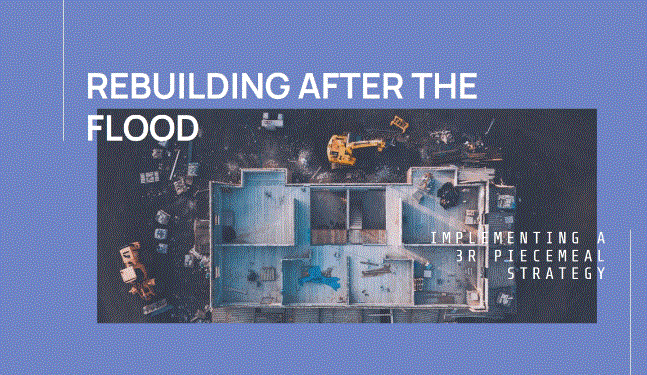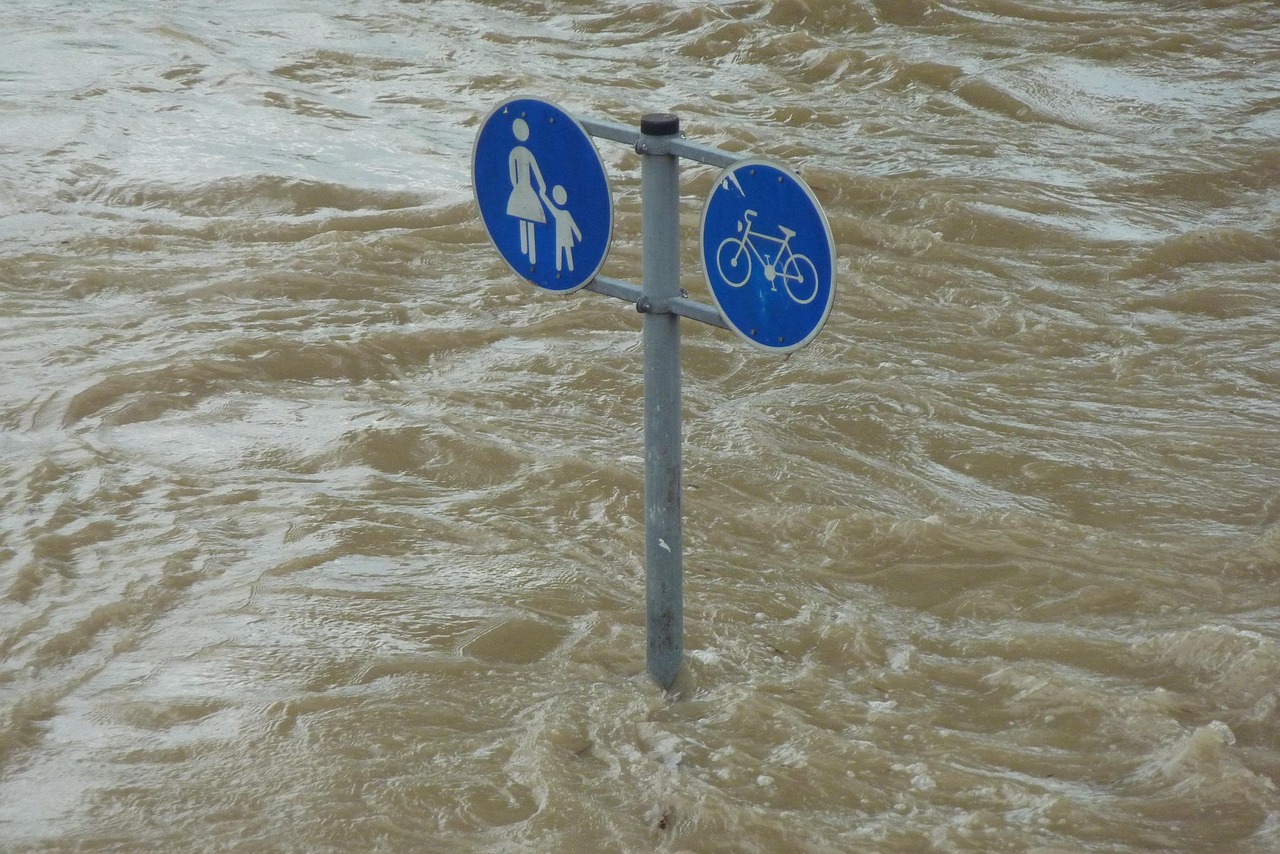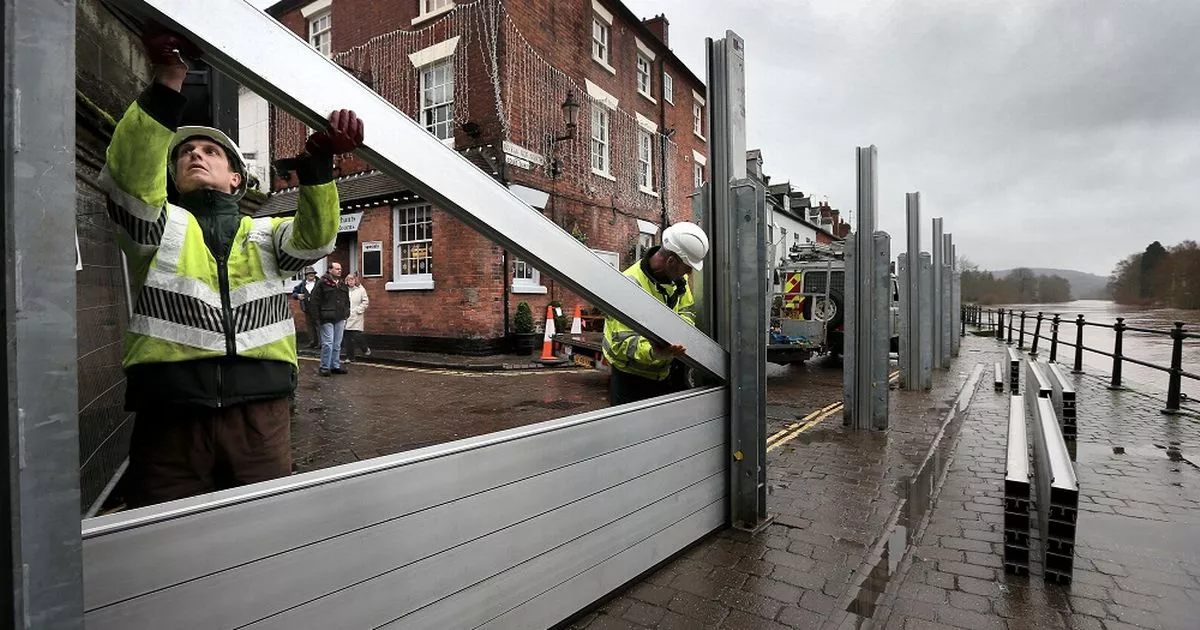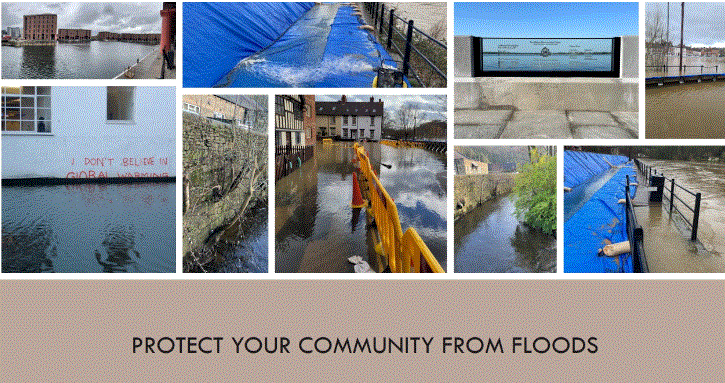FloodRecover 3R Piecemeal Strategy
It’s best, like most things, to provide prevention rather than cure. It is possible to build a floodproof house from scratch, after all we showed you how to do that in 2009 in conjunction with The Building Research Establishment (BRE) and Baca Architects in the UK.
Ask me for a copy, if you are interested!
Even though it is a simple process with off-the-shelf products there is no incentive for builders & developers to do so even though we estimated the increase in costs to be less than 5% of the overall build cost – and surely that could have resulted in an increase in value when selling the property*.
These costs can increase substantially when trying to retrofit a property as it requires a strip out to access the hard-to-reach places and a lot more time and labour to get the detail right.
So, the most cost effective time to provide a flood resilient repair is just after you have flooded, although I would argue that the extra cost of doing this ahead of time and preparing your property* for a flood is offset by the disruption to your life, the cost of alternative accommodation and the mental strife.
I discussed the different approaches to floodproofing in the first article and below you can see the different elements of dry proofing (keep the water out) and wet proofing (managing the water internally).
In reality both methods will be employed as it is desirable to keep the water out as much as possible but this has to be with the structural integrity of the property* in mind. Depending ono the property’s* construction this is usually limited to between 600mm & 900mm. Thereafter it is best to let the water in so you don’t knock the property* down.at could have resulted in an increase in value when selling the property*.
These costs can increase substantially when trying to retrofit a property as it requires a strip out to access the hard-to-reach places and a lot more time and labour to get the detail right.
So, the most cost effective time to provide a flood resilient repair is just after you have flooded, although I would argue that the extra cost of doing this ahead of time and preparing your property* for a flood is offset by the disruption to your life, the cost of alternative accommodation and the mental strife.
I discussed the different approaches to floodproofing in the first article and below you can see the different elements of dry proofing (keep the water out) and wet proofing (managing the water internally).
In reality both methods will be employed as it is desirable to keep the water out as much as possible but this has to be with the structural integrity of the property* in mind. Depending ono the property’s* construction this is usually limited to between 600mm & 900mm. Thereafter it is best to let the water in so you don’t knock the property* down.
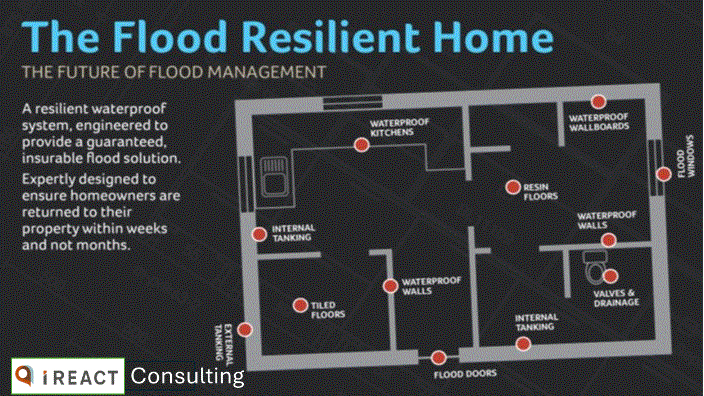
It is relatively inexpensive to keep the water out using a combination of flood doors, barriers, sewer non-return valves and wall waterproofing with costs around Aus$8,000 for an average sized house. Flood resilient repairs require a lot more work and products so the costs can be quite high and ranging from Aus$30,000 to Aus$100,000 and more, depending on the size of your property*.
Piecemeal Strategy
For this reason (high cost) I developed a strategy to manage these costs whilst achieving a result that is insurable and enduring and can be achieved in stages.
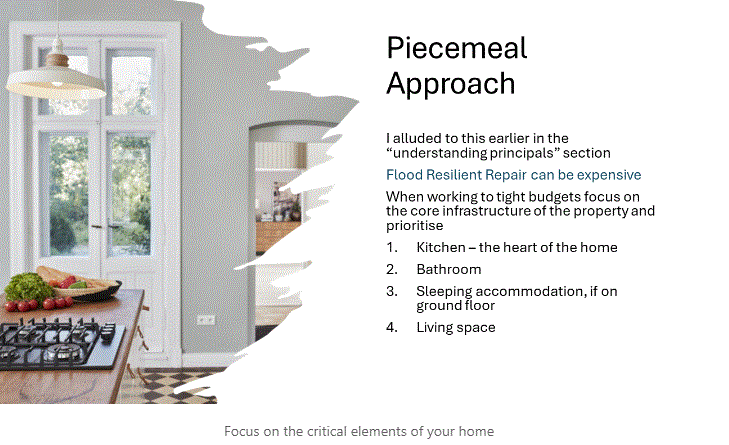
A focus on the critical infrastructure or critical elements of a property will enable you to recover faster. If you are only able to afford a small flood resilient repair then focus on your kitchen. This is the heart of your house and if this is functioning then your home is.
Piecemeal – but with an overall plan
-
Choose and install flood protection devices (doors, barriers) that are appropriate to your flood type** if you are planning to keep the water out.
-
Protect the external walls and penetrations if appropriate**.
-
Protect your sewer & white goods connections if appropriate**. You don’t want raw sewage in your property!
-
If you are also planning internal repairs make sure the flood doors & barriers (above) are connected to the internal measures.
-
If you are installing a new floodproof kitchen, make sure your ground floor walls in this area are flood proof – Gypsum/plaster board is not the answer!
-
Manage the boundaries between rooms so they can be easily picked up in subsequent phases of the repair.
-
Plan the location of sump pumps; they may not be in the room you are renovating and please – YOU ALWAYS NEED PUMPS.
PUMPS
Regardless of your chosen solution install pumps. These can be in a sump (manhole) or mobile (Puddle Suckers) but they are always an essential part of a solution. Barriers can overtop, houses leak and even concrete floors can crack under too much pressure. In all these circumstances a pump (preferably more than one) will help to mitigate the damage to a controllable level.
Drying and the 3Rs are next but that’s for another newsletter.
*Note, that I use the word property throughout. Although my graphics are generally around residential homes these solutions and strategies apply to all building types. For floodproof kitchen, read floodproof workshop, or retail shelving as an example. Within the piecemeal approach your critical elements might be an industrial/hospitality kitchen, a piece of machinery or a power plant.
**Note, when we look at flood protection in more detail I will explain why it is important to understand the flood type, how it got there and how long it is going to last, amongst other things.

